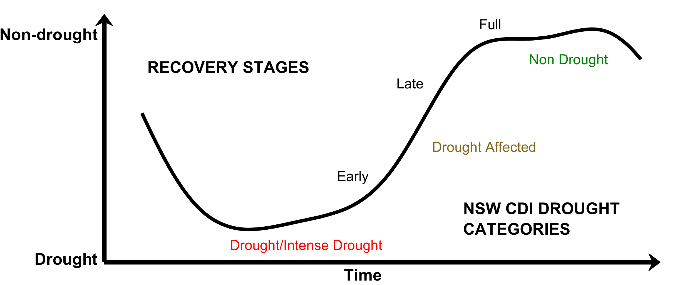Rainfall and drought recovery
The drought recovery period can be extremely challenging for producers. Rain variability is the source of high uncertainty and means that no two drought recoveries are the same. Drought recovery is largely driven by rainfall and the effectiveness of that rainfall in improving the water and agronomic status of the farm.
There is also the risk of a “false recovery” if improvements cannot be maintained due a lack of follow up rainfall. The NSW Combined Drought Indicator (CDI) can be used to track the drought recovery transition period.

Find out more about the stages and type of drought recovery, and managing farm resources during recovery on our "Farm Resources" tab of the State Seasonal Update.